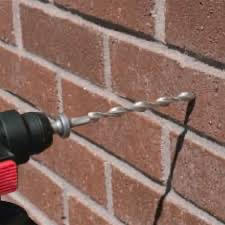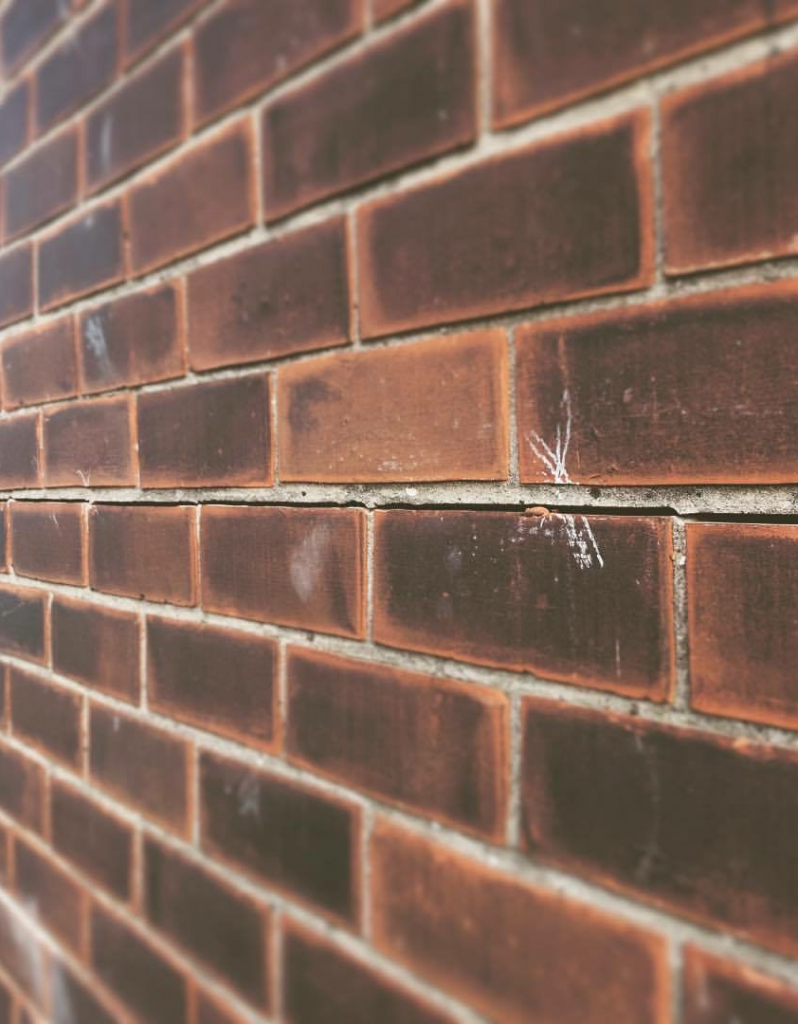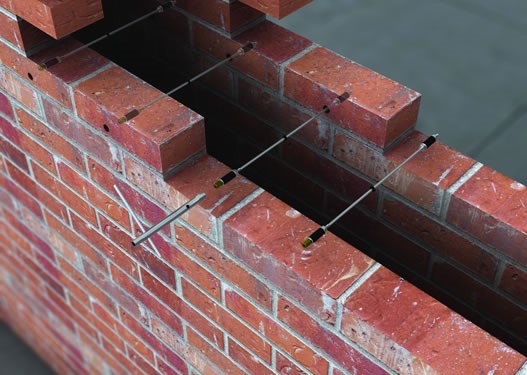Wall ties, their replacement and diagnosing any problems in your masonry
Here are the three most important questions that need to be asked:
What kind of walls do you have?
What are cavity wall ties?
Do your ties need replacing?

1.) What kind of walls do you have?
This is the first and by far the most important question.
There are two primary ways in which a property is built. Pre-1890s all walls were built with a solid construction, with walls usually about 9 inches thick. Then gradually from 1890 onwards, cavity walls. These are walls comprising of an inner leaf and an outer leaf of brickwork (a gap in the middle), whilst this cavity was designed to prevent damp penetrating through. If your walls are of solid construction there are no ties and thus nothing to replace. Although no need for ties, these solid walls are built using a lime mortar and need to be maintained properly to prevent damp.
The primary way of maintaining these walls is to make sure that only a breathable lime mortar is used for the pointing. A breathable lime mortar allows moisture to escape, preventing damp and damage to the masonry. Cement should never be put into a lime built building. The lungs of a lime building, this is the lower meter of the walls should also be kept as clear from soil. In addition, anything butted up against them should be removed and all air bricks kept in place to allow air flow.
Bulging or cracked masonry is also something to look out for. These thick walls are definitely hardy, but not impervious to structural problems. General movement over the years, replacing doors and windows and a host of other factors can lead to cracks in the masonry.
These problems are easily solved. Unfortunately it is very common within the building industry for inexperienced tradesmen to use the wrong materials and methods simply putting off the inevitable. A good example of this is with a structural crack under a window. Many times we have seen a builder repoint the entire area of the crack, simply hiding the problem. Within a year or so the masonry crack comes back through and you are back at square one.
The correct method for fixing a structural crack is to run stainless steel helical bar deep in the mortar bed. This is then covered in a resin running each side of the window by at least 50cm. You let this dry and then your pointing goes over the top. This is a permeant repair and seamless, there is no sign that any work has taken place and the area reinforced and won’t re-crack. We use this as just one example of how doing a job properly. Once and with the right materials is our ethos.

2.) What are Cavity Wall Ties
If we have now determined that you’re walls where built with a cavity. We can now start talking about the ties between your walls and also their importance.
Cavity wall ties are pieces of metal that run along various courses of brickwork. They tie the inner leaf, that’s the load-bearing wall, to the outer cavity wall.
The ties hold the walls together adding strength and stability.
These ties would have been added during the construction. We have since learnt over the years that the materials used for these ties weren’t suitable for long-term purposes. They were primarily steel, usually with a coat of paint or sometimes galvanised. This steel has been found to be mild and with time and the elements extremely susceptible to corrosion.
Their life span can be as short as 20 years, though in many cases it is far longer before the damaging effects take place.
Once corrosion starts taking place the steel due to its nature expands. This expansion of the wall ties can be as much as three times their original size which can cause major structural problems.
Bricks are forced apart above and below the tie. These ties are placed along a course of brick work and spaced every 5 to 6 courses up the masonry. In the more extreme cases you get horizontal cracks along the courses of brickwork where these now corroded ties are situated.
In a perfect world we aim to replace these ties before this sort of damage takes place, though in lots of instances this isn’t the case.
3.) Do your Wall Ties need replacing and if so how is this done?
Often we are contacted by homeowners of a property that is new to them. More often then not it comes up on a building survey that the ties need replacing with a modern stainless steel remedial tie.
Had a survey or you just want to assess the general state of your structure? We are happy to help.
Our surveys are free, honest and cover the condition of your wall ties, and diagnose any structural cracks or defects. In addition, we can spot any brick and repointing problems that need to be addressed. Our customers are often surprised that the extent of the work isn’t it as big a job as they expect.

If you would like to see some more of our work then why not take a look at our Facebook page
Drop us a line by filling out our form here
